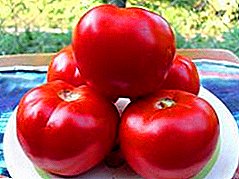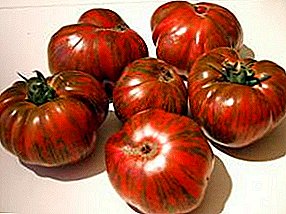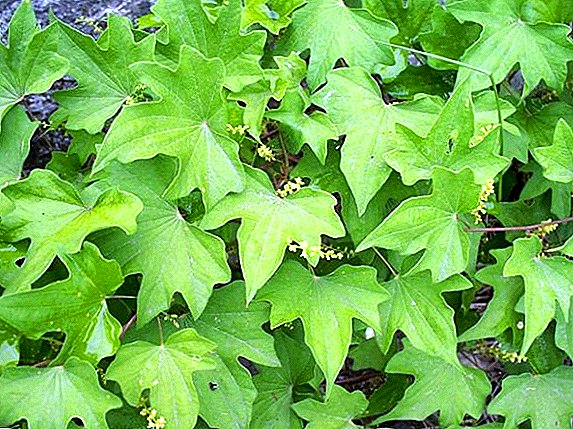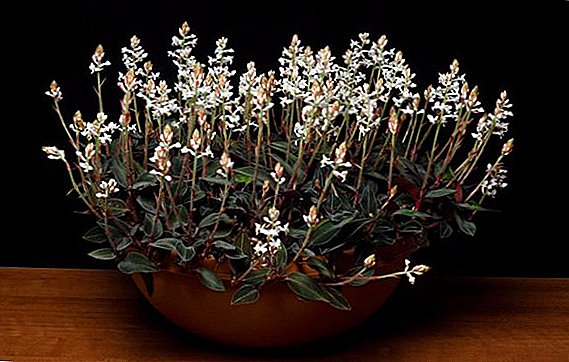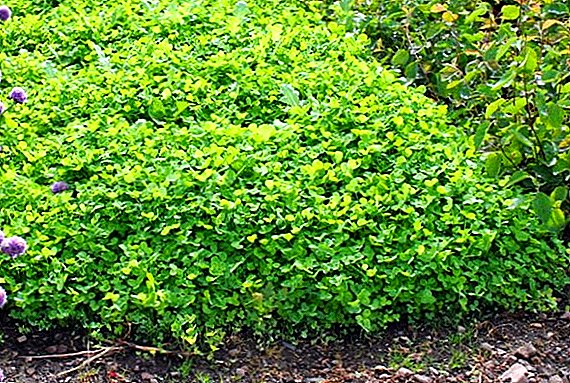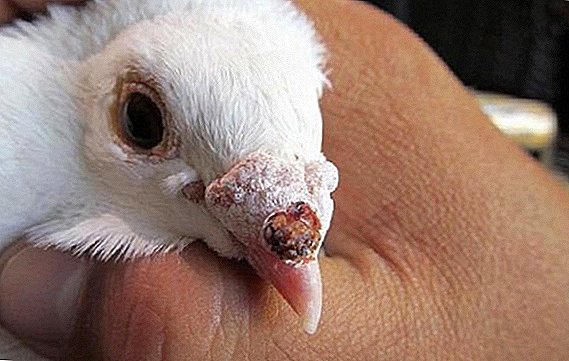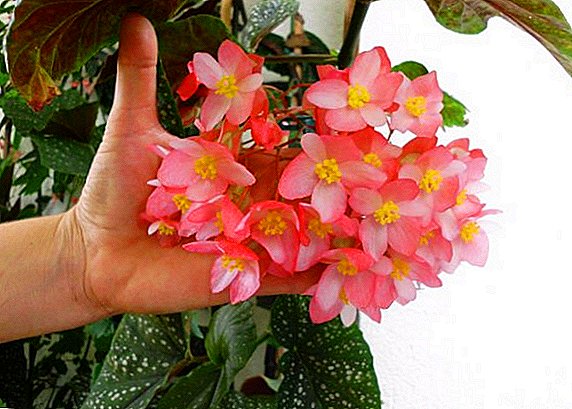 Begonia is a common indoor flower, which is grown both in small apartments and in huge greenhouses, where the plant reaches a two-meter height. There are about 1600 species in the world, and today we will talk about one of them. You will learn what coral begonia is, how it differs from other species, how to plant it correctly and how to get a beautiful flowering plant.
Begonia is a common indoor flower, which is grown both in small apartments and in huge greenhouses, where the plant reaches a two-meter height. There are about 1600 species in the world, and today we will talk about one of them. You will learn what coral begonia is, how it differs from other species, how to plant it correctly and how to get a beautiful flowering plant.
Botanical description
Coral begonia - This is a separate type of ornamental plants, which belongs to the genus Begonia. Her coral variation came to us from the tropical forests of Brazil, where the flower grows up to 1.5 m in height. At home, shrub has a height of 0.6-1 m.
The flower has an erect stem, leafy plates can be painted in various shades of green, have an alternate arrangement, the length is up to 20 cm, and the width is up to 7 cm. The leaves are covered with silvery and milky inclusions. The shape of the leaf plates can be oval, rugged, or elongated.
Learn more about the diversity of begonias, as well as what kind of care you need for tuberous, royal, ampelnoe, Bolivian begonia.

Flowering features
Most often, the bloom falls in the springtime, however, subject to temperature conditions, begonia can bloom at any time of the year. The buds are formed from intergrown petals, which are painted in various shades of red (very rarely white). Inflorescences resemble berry clusters.
This type of begonia is valued precisely because of the pleasant-smelling flowers that have not too sharp aroma. It is interesting that the flower stalks have not only a pleasant smell, but also a good taste, which gives sourness.
Orchids, hoyas, zigokaktus, klerodendrum, hibiscus, gloriosa, pelargonium, euphorbia, violet, crossander, geranium bloom beautifully.
Growing coral begonias at home
Now let's talk about what conditions are necessary for growing a flower at home. We will understand the main indicators.
Substrate and fertilizer
The easiest way is to buy ready-made soil for violets at a flower shop, since finding components for optimal soil in urban environments is extremely problematic. If you want to make a substrate yourself, you will need 1 part of peat, 1 part of compost, 1 part of river sand (coarse) and 2 parts of garden soil (upper layer).  Be sure to form at the bottom of the pot drainage layer of gravel or small pebbles. Its thickness should be at least 1.5 cm.
Be sure to form at the bottom of the pot drainage layer of gravel or small pebbles. Its thickness should be at least 1.5 cm.
As for fertilizers, there is no need for them if you change the substrate annually. Optionally, you can feed the plant with potassium humanity, which provides the appropriate mineral to the plant.
Lighting
For the flower is important the absence of direct sunlight, which cause burns on the leaves. Place the pot should be so that they fell only scattered sunlight. Partial but not strong shading is acceptable.
In the shade, adiant, chlorophytum, clivia, monstera, anturium, spathyllum, ficus, aspidistra will feel great.Once again, not to worry about the plant, it should be located on the north side, where begonia burns do not threaten.
Temperature
Immediately it should be said that begonia does not tolerate drafts, because of which it begins to ache and wipe. For this reason, it should be placed in a place where the air flow is minimal.
As for the temperature, it should be in the range of 17-25 ° C. If in winter the temperature drops below 13 ° C, the flower may die. 
Important! It is forbidden to place a pot near the air conditioner or fan.
Care: moisture and watering
We turn to the care of the flower, and start with moisture and watering.
In order not to make a mistake that will lead to the death of the plant, you should always remember the following: it is better not to water the flower once more than to fill it completely.
The fact is that begonia has fleshy leaves through which it gets rid of excess moisture. However, with a regular surplus very quickly, the root system decays, which causes the flower to dry. Of course, it is impossible for a plant to live without water, but it will be easier to “reanimate” begonia, which for a long time did without water, than a plant with rotten roots.
In the summer you should regularly water the plant. If the top 2 cm of the substrate is dry - it is worth moistening the soil. If they are wet - it means that it is worth to wait a little with irrigation.  In winter, the amount of water introduced is limited, especially if the room temperature drops to the minimum described above. In this case, an excess of moisture, even insignificant, will cause overcooling of the roots, resulting in the appearance of various diseases.
In winter, the amount of water introduced is limited, especially if the room temperature drops to the minimum described above. In this case, an excess of moisture, even insignificant, will cause overcooling of the roots, resulting in the appearance of various diseases.
Pruning
Pruning is carried out both to rejuvenate the plant, and to ensure that the aboveground part is properly formed.
Shoots and stem can be arranged in the form of a ball, a pyramid or a bush. You should start pruning only when the stem reaches 10 cm in length. Shorten to the length you need, then wait until the side shoots grow so that you can finish the formation of the aerial part.
If you do not want to engage in the formation of the bush, then it is enough once a year to carry out anti-aging pruning. After the end of winter, all the stems should be shortened so that their length does not exceed 7 cm. This is done in order to start the process of active growth of new shoots.
Did you know? In 1920, an asteroid was named after begonias. This name was given to the heavenly body by the German astronomer Carl Reinmuth.
 To make the cropping successful, pay attention to some subtleties:
To make the cropping successful, pay attention to some subtleties:- Trimming is carried out exclusively with a sharp knife. It is best to use a construction knife, as it is similar in sharpness to a razor blade.
- Thick-barrel variations are best not cut at the root, but only to engage in shortening strongly overgrown shoots.
- After pruning, you can not change the temperature, otherwise the plant will start to hurt.
Breeding
Consider the easiest way to breed coral begonia, which will allow you to get good quality planting material.
First we need to take a healthy leaf stalk (leaf and leg, on which it rests) from the central part of the stem. Lower leaves are best not to use.
Next, put the cutting in clean water at room temperature without any additives. From time to time we check the presence of small roots. Once the roots reach a length of 1 cm, it is possible to plant in the substrate. As the substrate is used the same composition as for planting an adult plant. 
Important! To prevent a sheet that has been planted in the soil, the top of the substrate should be covered with wood ash.
After planting, cover the pot with a glass jar or cut bottle. So you will get a stronger plant, because you will create greenhouse conditions for it.
Diseases and pests
Let's start with the diseases of the plant, and then talk about pests.
Gray rot. This disease is caused by a fungus that attacks begonia if it develops at high temperatures and high humidity. The disease is characterized by the fact that on the leaves appear white spots of irregular shape, which soon turn into plaque covering all the leaf plates. After a while, the leaves begin to rot, and the leafy legs break off. In the absence of treatment, the begonia very quickly loses its green mass and dies.
Initial treatment is carried out using Bordeaux liquid, which is not dangerous to humans when used indoors. Make a 1% solution, and then treat the aerial part. It is important that after processing the microclimate disappears, which caused the appearance of the fungus (it is necessary to reduce the humidity).  If Bordeaux liquid does not help, the plant is treated with a fungicide ("Fundazole").
If Bordeaux liquid does not help, the plant is treated with a fungicide ("Fundazole").
Important! Processing with strong chemicals is carried out only in the fresh air.
Bacterial spotting. According to the name, the disease is caused by bacteria. The disease manifests itself in the form of small watery spots that cover leafy plates. Unfortunately, this disease is not treated, so the plant is disposed of along with the ground, and the pot is treated or boiled several times.
As a preventive measure, a 5% suspension of copper oxychloride is used, with which other plants in the house are processed. The treatment is carried out twice with a break of 15 days.
Go to the pests.
Shchitovki. Insect pest that affects many indoor plants. It is a small oval insect, which is located on the leaves of the plant and is easily removed by hand without damaging the leaves.  The presence of scythes can be identified by a sticky coating on the leaves and stems. This is the waste of insects, which provoke the appearance of soot fungus.
The presence of scythes can be identified by a sticky coating on the leaves and stems. This is the waste of insects, which provoke the appearance of soot fungus.
For the destruction of the pest is used insecticide directed action ("Aktellik", "Aktara").
Important! If the plant does not bloom, it most likely lacks nutrients. Also, the plant may not bloom after the disease or pests. The lack of flowers does not mean that begonia is sick with something.
Spider mite These tiny pests are located on the inside of the sheet, so they can not be detected immediately. After the appearance of mites, a barely visible web appears on the leaves of the plant, on which eggs and larvae can be located.
The spider mite is a sucking pest (it feeds on the sap of the plant), - accordingly, in the presence of a large colony, the begonia begins to rapidly lose moisture and nutrients, as a result of which it dies.
You can destroy the pest by the same means as the shield. You can also use a soap solution that helps with a weak infection. 
Find out more about who and what can harm begonias.
Leaves fall: what to do if leaves foliage
If the plant drops foliage - it means that something is missing. Mass falling of leaves in winter time means that the room is too cold and the begonia will freeze. To stop the flower from losing leaves, it is enough to raise the temperature.
It may be that begonia leaves drooped, as if you had not watered it for a long time. This problem occurs when the flower is located in the kitchen. Products of gas burning harm it, therefore it is “treated” by only transferring begonias to another room.
If the leaves fade before falling off, it means that the nematode has settled on the begonias. It is useless to fight it, so dispose of the plant and the soil as soon as possible.
Did you know? In Japan, a special begonia was bred, which was presented to the then leader of the DPRK. The peculiarity of the variety is that the plant begins to bloom just on the birthday of Kim Jong Il, February 16.
So, now you know how to plant and grow coral begonia correctly, what problems can arise and how to solve them. Remember that most difficulties arise from improper care. Only some diseases can spread from other plants. For this reason, you must comply with the conditions of detention, so as not to spend money on means to combat diseases and pests.



